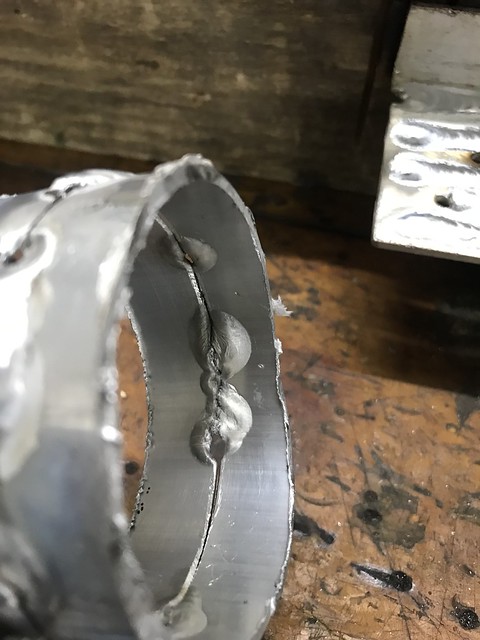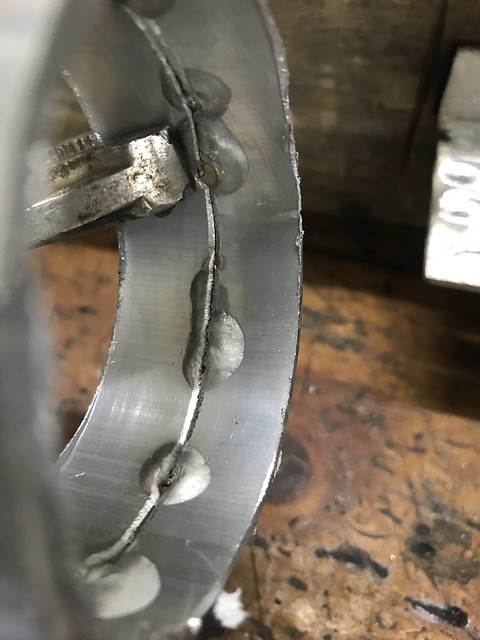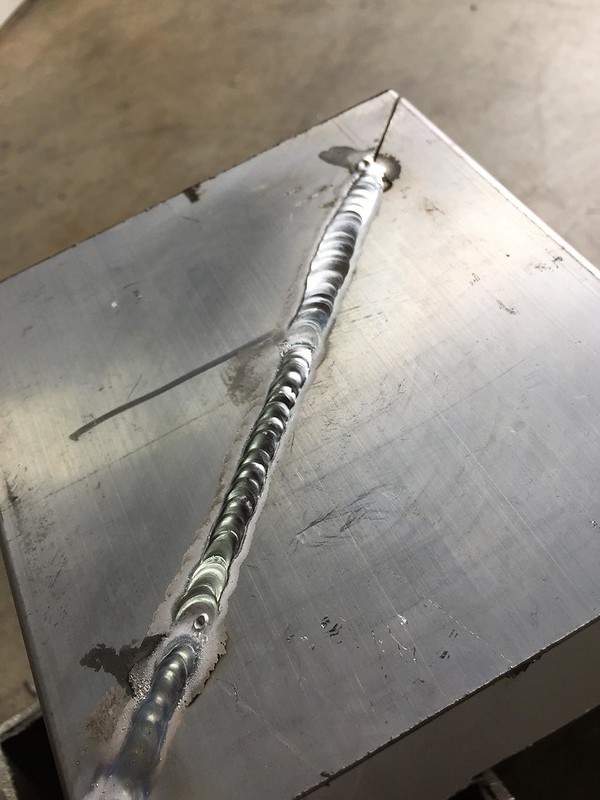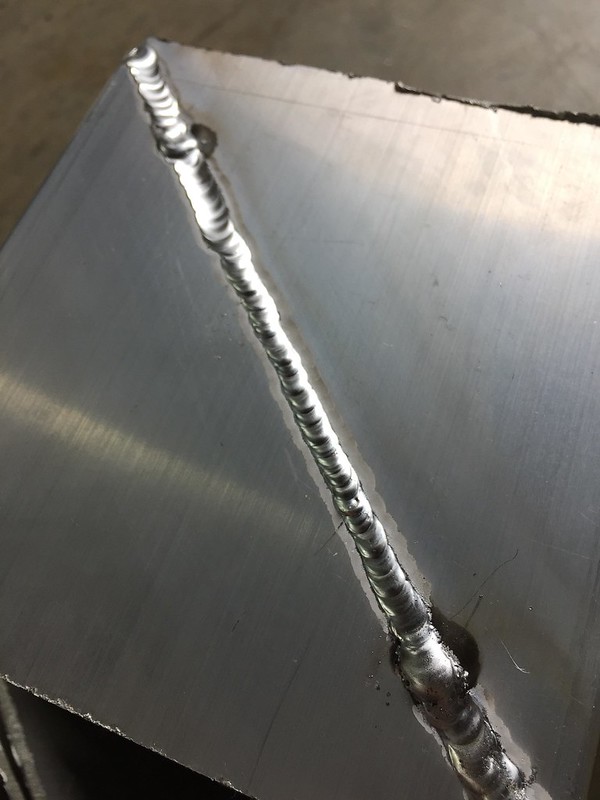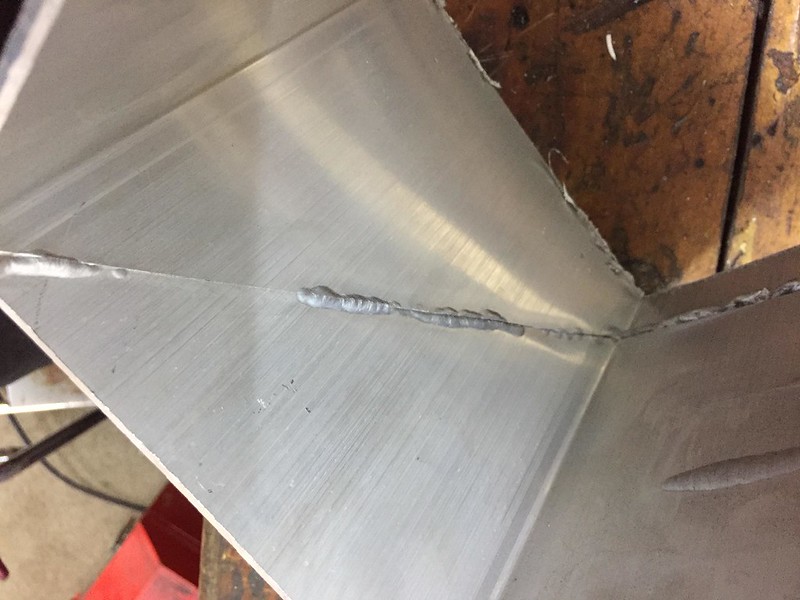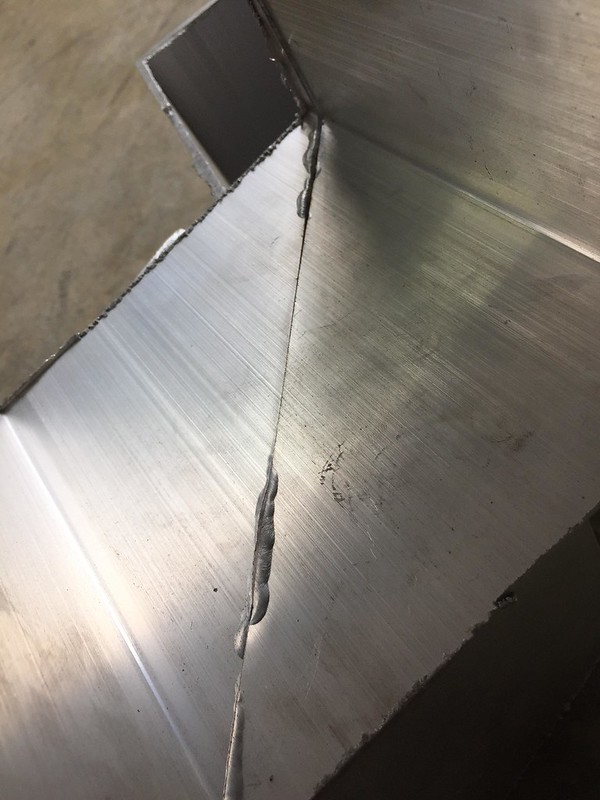I am self taught, just like doing my own and friends projects in the garage. Have got reasonably ok at mild and stainless steel tig, so thought I'd try give alloy a go.
Firstly, machine settings, Boc Smoothcraft 185 hf:
3/32 tungsten, White band (Zirconiated)
1/16 filler 5356
AC balance pretty neutral about 50%
Pure argon gas
Gas lens #8
Aluminium, not sure what type, about 2mm thick, I clean it with acetone before welding.
So practiced on some flat plate, varying with amperages, think I got it going ok and ended up on about 58amps (top middle ones)

Then trying on some intercooler pipe I had lying around was an absolute disaster. Same settings and as soon as I get the puddle going it caves in.
So I keep trying turning the amps down about 5 at a time, I end up on 30amps and its still doing it. I can stuff the filler in and just try save it but its not right. Then the penetration looks messed from the other side, I doesn't even look like its penetrated, I'm really confused.
I can't even get a nice bead going.
Any help MUCH appreciated!


